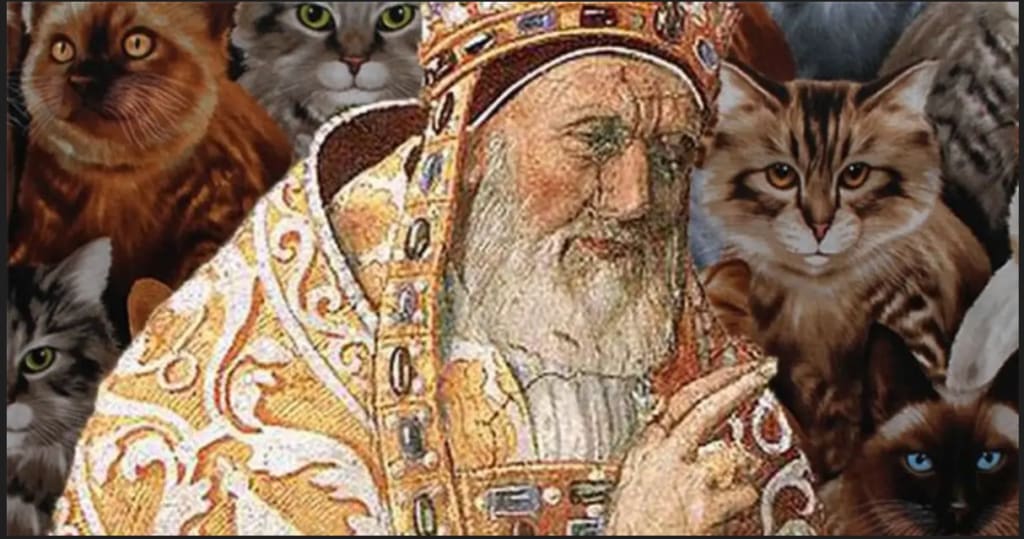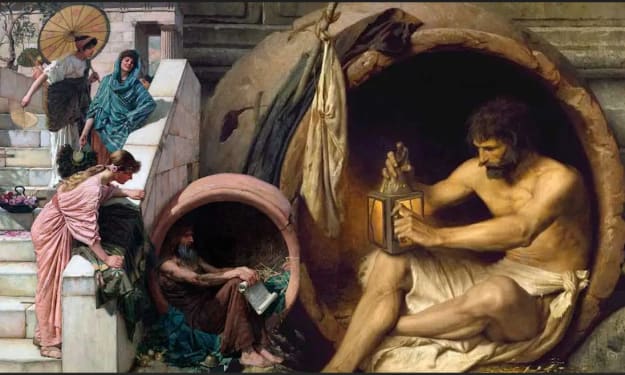Thou Shalt not suffer a Cat to Live: Pope Gregory IX's Cat Extermination
History

Pope Gregory IX's declaration regarding black cats as instruments of Satan represents a poignant and consequential episode in medieval history, showcasing the intersection of religious superstition, societal fear, and unintended consequences. Gregory IX, who reigned as pope from 1227 to 1241, issued a papal bull known as Vox in Rama in 1233, which condemned the supposed association of black cats with witchcraft and devilry. This decree, influenced by prevailing beliefs and fears of the time, set off a chain of events that had profound implications for both human society and the natural world.
During the medieval period, Europe was deeply entrenched in religious fervor and superstition. Animals, including cats, were often imbued with symbolic meanings and viewed through the lens of Christian theology. Black cats, in particular, became associated with darkness, witchcraft, and occult practices. This association stemmed partly from pagan beliefs that persisted despite Christianization efforts, where black cats were seen as familiar spirits of witches or even witches themselves in animal form.
Pope Gregory IX's bull Vox in Rama intensified existing suspicions and fears surrounding black cats. The papal decree condemned them as manifestations of evil and called for their eradication as a means to combat heresy and demonic influence. This directive was not merely theoretical; it prompted widespread persecution of cats across Europe. In many regions, cats, especially black ones, were hunted down, tortured, and killed en masse. The rationale was that by eliminating these animals, perceived as conduits of diabolical forces, communities could purge themselves of spiritual corruption.
Ironically, the extermination of cats, particularly in urban areas, had unintended ecological and public health consequences. Cats had long served a crucial role in controlling rodent populations, especially rats, which were prolific carriers of diseases such as plague. With the decline in cat numbers due to persecution, rat populations flourished unchecked. Rats, thriving in urban environments where they could feed on human refuse and find shelter in crowded dwellings, played a significant role in spreading diseases like the Black Plague (Yersinia pestis) across Europe in the 14th century.
The Black Death, one of the deadliest pandemics in human history, devastated Europe, wiping out an estimated 25 to 50 percent of the population in just a few years. The absence of cats, natural predators of rats, allowed rat populations to explode, facilitating the rapid spread of plague-carrying fleas and contributing to the severity and scale of the pandemic. Thus, Gregory IX's papal bull, intended to protect Christian communities from spiritual harm, inadvertently exacerbated the very real threat of disease transmission by rodents.
Beyond its ecological and epidemiological impact, Gregory IX's decree reflects broader themes in medieval society. It highlights the pervasive influence of religious authority and superstition on everyday life, as well as the consequences of fear-driven policies on public health and social stability. The persecution of black cats underscores the precarious balance between human actions and the natural environment, revealing how deeply intertwined cultural beliefs and ecological dynamics can be.
Moreover, the episode of the black cats illustrates the evolving attitudes towards animals in history. Cats, once revered in ancient Egypt and other cultures for their roles in pest control and companionship, became scapegoats in medieval Europe due to their perceived association with malevolent forces. The treatment of cats during this period reflects not only human anxieties about the supernatural but also shifts in societal attitudes towards animals, oscillating between reverence and suspicion depending on cultural and religious contexts.
In modern times, the legacy of Pope Gregory IX's decree serves as a cautionary tale about the dangers of superstition and the unintended consequences of religiously motivated persecution. It prompts reflection on the ethical treatment of animals and the importance of evidence-based decision-making in public policy. The tragedy of the Black Death, exacerbated by the absence of natural predators for rats, stands as a stark reminder of the interconnectedness of ecological systems and the profound impact of human actions on biodiversity and public health.
In conclusion, Pope Gregory IX's declaration regarding black cats as instruments of Satan illuminates a dark chapter in medieval history, where religious beliefs and fears converged to influence societal attitudes and ecological dynamics. The persecution of cats, driven by superstition and enacted through papal authority, inadvertently exacerbated the spread of disease and contributed to the devastation of the Black Death. This historical episode underscores the enduring impact of human actions on the natural world and invites reflection on the intersections of culture, religion, and ecology in shaping historical events and their consequences.
About the Creator
Marveline Merab
“History never repeats itself. Man always does.”
― Voltaire
Enjoyed the story? Support the Creator.
Subscribe for free to receive all their stories in your feed.






Comments
There are no comments for this story
Be the first to respond and start the conversation.